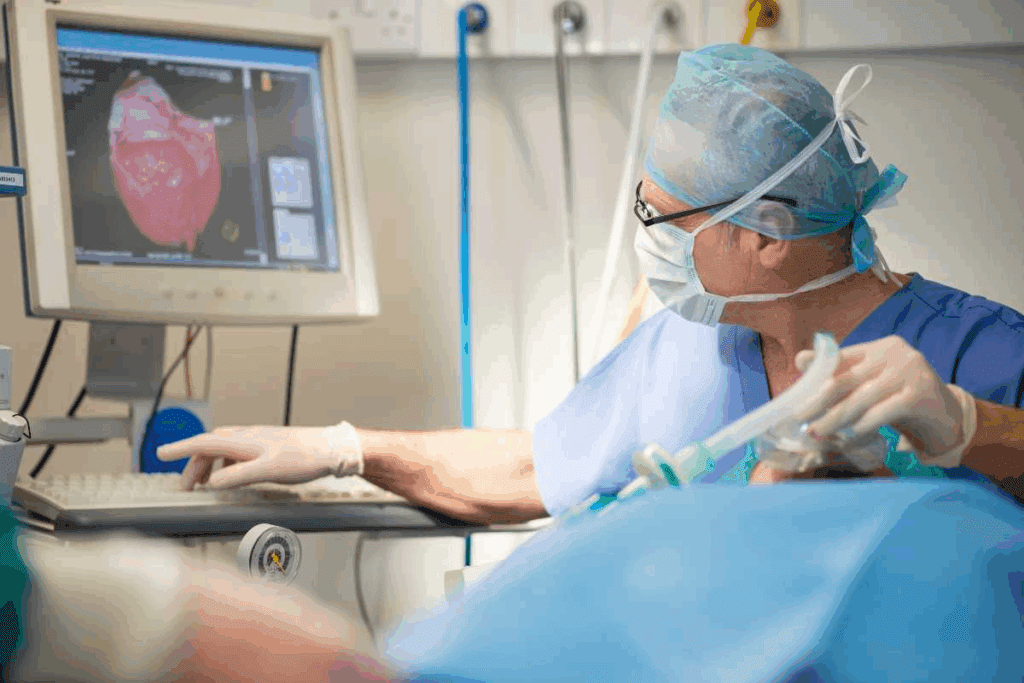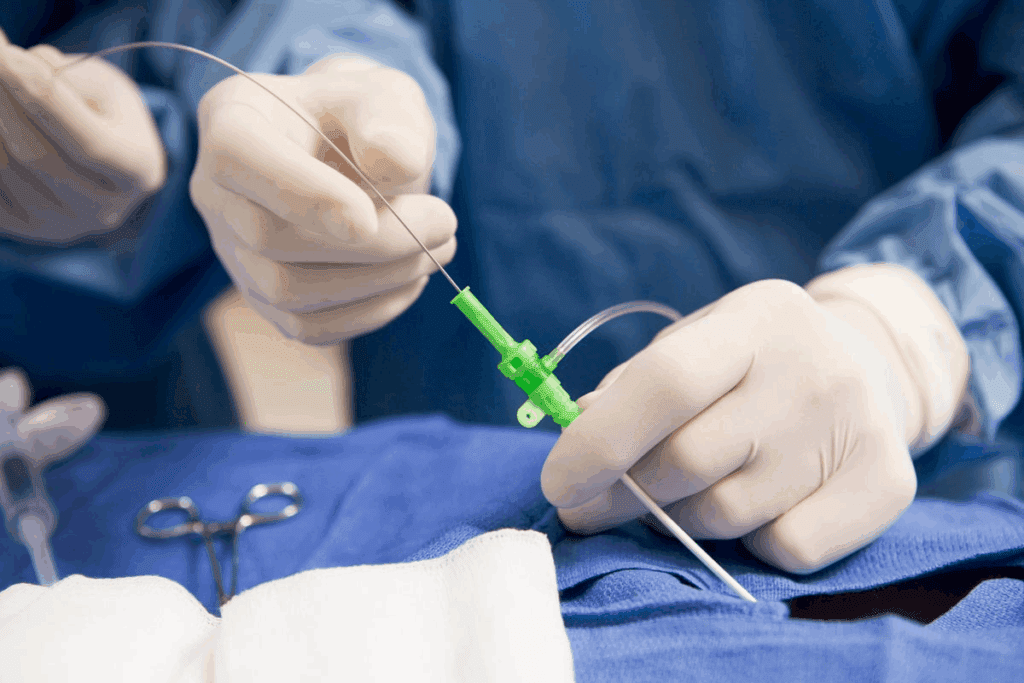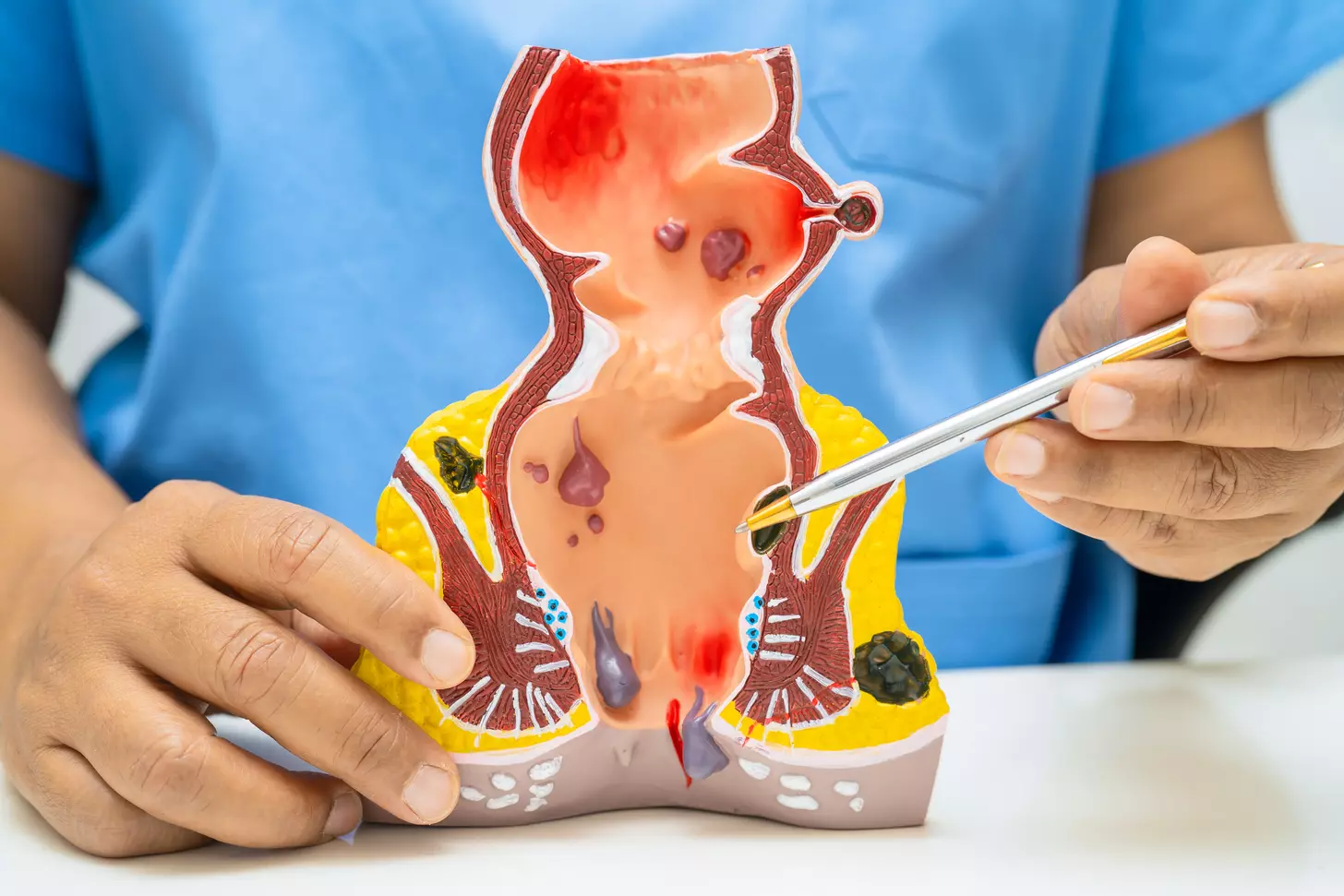Last Updated on November 26, 2025 by Bilal Hasdemir

Managing aortic endograft complications and stopping AAA endoleaks is key for safe care. At Liv Hospital, we use global knowledge and top-notch methods. This ensures our patients get the best care for aortic procedures.
We treat abdominal aortic aneurysms with abdominal aortic aneurysm stent grafts. This is a less invasive option compared to open surgery. Yet, issues like endoleaks are a big worry. We’ll talk about how to handle these problems and how to avoid them.
Key Takeaways
- Effective management of aortic endograft complications is critical for patient safety.
- Preventing AAA endoleaks requires thorough surveillance protocols.
- Abdominal aortic aneurysm stent grafts offer a minimally invasive treatment option.
- Long-term surveillance is essential for detecting and managing endoleak AAA complications.
- Advanced protocols and international expertise are vital for complex aortic procedures.
The Evolution of Aortic Endograft Technology for AAA Treatment

Aortic endograft technology has seen big changes, giving new hope to those with abdominal aortic aneurysms. These changes have made treatment better, with minimally invasive alternatives to old surgery methods.
Minimally Invasive Alternatives to Open Surgery
Today’s stent grafts for abdominal aortic aneurysms are better than before. A study on technological advances in abdominal aortic aneurysm shows they cut down on death rates and hospital stays. “EVAR has changed how we treat AAA, making it less invasive and faster to recover,” medical papers say.
Benefits of Modern Abdominal Aortic Aneurysm Stent Grafts
Modern stent grafts last longer, are more flexible, and seal better. These improvements have cut down on problems and made patients do better. We’ve seen a big drop in deaths and sicknesses from AAA repair.
Reduced Perioperative Mortality and Hospital Stay
Studies show modern stent grafts cut down on death rates and hospital stays. This is a big win over old surgery, which took longer to recover from. So, patients can get back to their lives faster, making them happier and healthier.
In short, the growth of aortic endograft technology has been a big leap forward in treating abdominal aortic aneurysms. With more progress, we’ll see even better results for patients with AAA.
Types and Components of Aortic Endografts Used in Clinical Practice

Aortic endografts are a big step forward in vascular surgery. They help doctors treat aortic aneurysms more accurately. These grafts have parts like the main graft body, iliac extensions, and aortic cuffs. Together, they keep the aneurysm sac out of blood flow.
Current AAA Stent Graft Designs and Materials
Today’s AAA stent grafts fit many aortic shapes, from simple to complex. They’re made from strong materials like nitinol and polyester or PTFE. These materials make the grafts flexible and strong, fitting well and reducing risks.
Stent grafts are getting better, with new features like:
- Improved sealing to stop leaks
- More flexibility for tricky aortic paths
- Custom designs for each patient
The Role of Aortic Cuffs in Complex Anatomies
Aortic cuffs are key for complex aneurysms, like those near the renal arteries. Aortic cuffs help seal the aneurysm from blood. They help in:
- Sealing the graft in tough cases
- Fixing type I endoleaks
- Keeping the graft in place
Triple A Stent Procedure: Technique and Applications
The triple A stent procedure treats abdominal aortic aneurysms with a stent graft. It needs careful planning and execution for the best results. We use it in many situations, like:
| Clinical Scenario | Application of Triple A Stent |
| Infrarenal AAA | Standard deployment of AAA stent graft |
| Complex Anatomy | Use of aortic cuffs and extensions for enhanced sealing |
| Hostile Aortic Neck | Employment of advanced sealing technologies |
Understanding aortic endografts and their parts shows their complexity. As these devices evolve, they will likely improve treatment of abdominal aortic aneurysms.
Understanding the Spectrum of Endoleaks in AAA Repair
Endoleaks are a big problem in treating abdominal aortic aneurysms (AAA) with endovascular repair (EVAR). These leaks can happen for many reasons. They are sorted into types based on why they happen and how they look.
Classification of Endoleak Types (I-V)
There are five main types of endoleaks:
- Type I: Leaks at the graft’s attachment sites.
- Type II: Leaks from branch vessels.
- Type III: Leaks through the graft due to tears or separation.
- Type IV: Leaks because the graft is porous.
- Type V: The sac gets pressurized without a visible leak.
Knowing these types helps doctors figure out the best treatment plan.
Clinical Significance of Different Endoleak Patterns
Each endoleak type has its own risk level. For example, Types I and III are high-risk because they can directly pressurize the sac.
Impact of Endoleaks on AAA Sac Dynamics
Endoleaks can keep the AAA sac pressurized. This can cause the sac to grow and increase the risk of rupture. It’s key to watch the sac’s dynamics closely for any bad signs.
We stress the need for regular checks and custom treatment plans to lower endoleak risks. Knowing about endoleaks helps doctors improve patient care after EVAR.
Risk Factors and Mechanisms of Aortic Graft Endoleak Development
Aortic graft endoleak development is a complex issue. It involves many factors like the body’s structure, the device used, and how the procedure is done. Knowing these risks is key to avoiding problems with endovascular aneurysm repair (EVAR).
Anatomical Predispositions for Endoleak Formation
The shape of the aortic neck is a big risk for endoleaks. A short or bent neck can make it hard for the graft to seal properly. This increases the chance of endoleaks. Table 1 lists the body’s features that make endoleaks more likely.
| Anatomical Factor | Description | Impact on Endoleak Risk |
| Short aortic neck | Neck length | Increased risk of Type I endoleak |
| Angulated aortic neck | Neck angle > 60 degrees | Compromised graft seal |
| Iliac artery disease | Stenosis or tortuosity | Difficulty in graft placement |
A top vascular surgeon says, “Choosing the right patient and planning carefully are vital to avoid endoleaks.”
“The patient’s anatomy is key to EVAR success. Tackling anatomical challenges is essential to prevent endoleaks.”
Device-Related Contributors to Endoleak Risk
Things like the graft’s design and size are also important. If the graft doesn’t fit right, it can’t seal well. This raises the risk of endoleaks.
The type of material and design of the stent graft also matter. For example, grafts with suprarenal fixation might prevent migration but can cause other issues.
Procedural Factors Affecting Endoleak Incidence
How the EVAR procedure is done can also affect endoleak risk. Things like not placing the graft correctly or not sealing it well can lead to endoleaks. The skill of the person doing the procedure and following best practices are very important.
A study found that “careful graft placement and post-EVAR checks are key to lowering endoleak rates.”
By understanding and tackling these risk factors, we can make aortic endograft placement safer for patients.
Comprehensive Surveillance Protocols Following Aortic Endograft Placement
Monitoring closely is key after placing an aortic endograft. It helps catch problems early. We make sure to follow a detailed plan to keep the repair working well over time.
Immediate Post-Procedure Monitoring
Right after the procedure, it’s important to watch for any issues. We look for signs like endoleaks, graft movement, or problems with the access site. We use imaging like CT scans early on to set a baseline for later checks.
Key components of immediate post-procedure monitoring include:
- Checking how the graft is placed and working
- Finding endoleaks or other problems
- Looking at the access site
Mid-Term Surveillance Strategies
For the mid-term, we do regular scans to see how the graft is doing. We usually check in at 6, 12, and 18 months.
Mid-term surveillance is key for spotting:
- Endoleaks or if they get worse
- If the graft has moved or parts have separated
- Changes in the size of the aneurysm sac
Long-Term Follow-Up for Late Device Failure Detection
Long-term checks are vital for catching problems that show up later. We keep an eye on things at 24 months and then every year after that.
Long-term follow-up focuses on:
- Watching for late endoleaks
- Checking if the graft is working right
- Looking at the size and shape of the aneurysm sac
With a thorough monitoring plan, we can make sure the aortic endograft works well for a long time. This helps improve patient care and outcomes.
Diagnostic Approaches to Identify and Classify Endoleak of Aortic Graft
Diagnosing and classifying endoleaks needs a detailed approach for the best patient care. We use different methods to spot and sort endoleaks correctly.
Advanced Imaging Techniques for Endoleak Detection
Advanced imaging is key in finding and sorting endoleaks. Computed Tomography Angiography (CTA) is a top choice because it’s very accurate. It shows the aortic graft and nearby areas clearly, helping find small endoleaks.
Duplex ultrasound is also useful for finding endoleaks. It’s non-invasive and checks blood flow in the aneurysm sac. But, its success depends on the person doing the test, and it might miss small endoleaks.
Interpreting AAA Sac Enlargement Without Visible Endoleak
Sometimes, the aneurysm sac grows even when there’s no visible endoleak. This is a tricky situation. We look for other reasons, like endotension, where the sac pressure is high but there’s no leak.
| Cause | Description | Diagnostic Approach |
| Endotension | Pressure within the aneurysm sac remains elevated | Direct sac pressure measurement |
| Low-flow endoleak | Small, slow-flow leaks not visible on standard imaging | Advanced imaging techniques, such as contrast-enhanced ultrasound |
| Graft porosity | Permeability of the graft material allowing fluid accumulation | Evaluation of graft material and porosity |
Differential Diagnosis of Endograft Complications
Endograft problems can show up in many ways, like endoleaks, graft movement, and parts coming apart. We need to figure out the cause of these problems. We look at the graft design, patient’s body, and how the procedure was done.
By using many diagnostic methods and understanding how endografts work, we can make accurate diagnoses. This helps us manage patients with aortic endografts well.
Evidence-Based Management Strategies for Different Endoleak Types
Managing endoleaks after endovascular aneurysm repair (EVAR) needs a deep understanding of each type. These complications can cause the aneurysm sac to grow and even rupture if not treated right.
Type I Endoleak: Proximal and Distal Attachment Site Leaks
Type I endoleaks happen when the endograft doesn’t seal well at the attachment sites. Prompt action is often needed to stop the aneurysm from getting bigger. Treatment options include balloon angioplasty, adding more stent-grafts, or embolizing the leaking vessel.
Type II Endoleak: Branch Vessel Reflux Management
Type II endoleaks come from blood flowing back through branch vessels. Watching the aneurysm closely is usually the first step, as some may get better on their own. But if the sac grows, embolizing the feeding vessels might be needed.
Type III and IV Endoleaks: Device Integrity Issues
Type III endoleaks are due to problems with the endograft, like tears or separations. Type IV endoleaks are caused by the graft being too porous. Fixing or replacing the damaged part of the endograft is usually the solution.
We stress the importance of custom management plans for each endoleak type. This approach focuses on the patient’s needs, taking into account the unique features of each endoleak.
Preventing Complications in Abdominal Aortic Stent Graft Procedures
To prevent complications in abdominal aortic stent graft procedures, we use a few key steps. These include choosing the right patients and using precise techniques. We’ll look at how these steps make EVAR safer and more effective.
Optimal Patient Selection Criteria
Choosing the right patients is key for aaa stent graft success. We check if the aneurysm fits the stent, the aortic neck’s condition, and if the iliac arteries are okay. We also look at the patient’s health and if they can safely have EVAR.
By being strict with our selection, we find the best candidates for stent for aaa treatment. This makes sure the treatment fits the patient’s needs, improving results.
Preoperative Planning and Device Sizing
Good planning before surgery is vital for abdominal aortic stent graft success. We use detailed images to understand the aorta and measure the stent graft size.
Choosing the right stent graft size is key to avoid complications like endoleaks. We use CT scans to pick the best stent for each patient.
Intraoperative Techniques to Minimize Endoleak Risk
During surgery, we use special techniques to lower endoleak risk in aaa stent graft procedures. We carefully place the stent graft and use balloons to seal it tightly.
These steps help avoid complications and make the repair last longer. Our aim is to improve the patient’s life and lower the risk of aneurysm death.
Managing Rare but Serious Complications of AAA Endografts
Endovascular aneurysm repair (EVAR) has changed how we treat abdominal aortic aneurysms (AAAs). But, rare but serious problems can happen. We need to talk about how to handle these issues, like endograft infection, component separation and migration, and aortic rupture.
Endograft Infection: Recognition and Treatment
Endograft infection is a rare but serious problem after AAA endograft placement. Prompt recognition and treatment are key to avoid severe outcomes. We use clinical signs, lab tests, and imaging to spot the infection.
Managing the infection often means using antibiotics and surgery. The exact treatment depends on how severe the infection is and the patient’s health.
In some cases, removing the infected endograft might be needed. Then, we use other methods like a neo-aortoiliac system or graft replacement.
Component Separation and Migration Management
Component separation and migration are serious problems after AAA endograft placement. These issues can cause endoleak formation or device failure, needing secondary treatments. We use advanced imaging to watch for these issues and plan how to manage them.
Fixing these problems often means endovascular reintervention, like ballooning or adding more stent-grafts. Sometimes, open surgery is needed to fix these issues.
Aortic Rupture Despite Endograft Treatment
Aortic rupture is a severe problem that can happen even with an endograft. Risk factors include endoleak, device migration, and inadequate sizing. We must act quickly to manage this life-threatening issue.
It’s important to keep a close eye on patients after EVAR to catch problems early. If there’s a rupture, we need to act fast with emergency endovascular or open surgery.
Multidisciplinary Approach to Complex Complications
Handling the rare but serious complications of AAA endografts needs a multidisciplinary approach. This includes vascular surgeons, interventional radiologists, and other experts. Working together, we can give patients the care they need.
“A multidisciplinary team is essential for optimizing outcomes in patients with complex vascular conditions,” according to a leading vascular surgeon.
By working together, we can improve patient outcomes and give the best care for these serious complications.
Conclusion: Optimizing Outcomes in Aortic Endograft Therapy
Improving results in aortic endograft therapy is complex. It involves choosing the right patients, selecting the best devices, and using precise techniques. Keeping a close eye on patients over time is key to spotting and handling issues like endoleaks.
Healthcare teams can make EVAR safer and more effective by knowing how to handle complications. Working together is vital to tackle the special challenges of AAA stent grafts.
It’s critical to have thorough follow-up plans and act quickly to manage any problems. This way, doctors can better understand and use aortic endograft technology. It helps in improving patient care and lowering the chance of bad outcomes from AAA stent grafts.
FAQ
What is an aortic endograft?
An aortic endograft is a small device used to treat aortic aneurysms. It acts like a stent to line the aorta. This stops blood from flowing into the aneurysm sac.
What are the benefits of using modern abdominal aortic aneurysm stent grafts?
Modern stent grafts are more durable and flexible. They seal better than older ones. This makes surgery safer and shorter.
What is an endoleak, and how is it classified?
An endoleak is a problem after EVAR where blood leaks into the aneurysm sac. It’s classified into types I to V based on its cause and how it behaves.
What are the risk factors for developing an endoleak after EVAR?
Several things can increase the risk of an endoleak. These include the shape of the aorta, the design of the stent graft, and how well it’s placed during surgery.
How are endoleaks diagnosed and managed?
Doctors use CT scans and ultrasound to find endoleaks. Treatment depends on the type and how serious it is. It can range from watching it closely to fixing or replacing the graft.
What is the role of aortic cuffs in managing complex anatomies?
Aortic cuffs help with tricky aortic shapes. They provide extra sealing, making treatment more effective for each patient’s unique anatomy.
What is a triple A stent procedure?
A triple A stent procedure is a minimally invasive way to treat an AAA. It uses a stent graft to fix the aneurysm, helping patients recover faster and reducing risks.
How important is long-term surveillance after aortic endograft placement?
Keeping an eye on the graft over time is very important. It helps catch any problems early, ensuring the repair works well for a long time.
What are the rare but serious complications of AAA endografts?
Serious but rare issues include graft infections, parts of the graft breaking off, and aortic ruptures. These need a team effort to manage and treat.
How can complications be prevented during abdominal aortic stent graft procedures?
To avoid problems, choose the right patient and plan carefully. Use the right size stent and precise techniques during surgery. This reduces the risk of complications.
References
- Brewster, D. C., et al. (2006). Long-term outcomes after endovascular abdominal aortic aneurysm repair: 12-year experience. Journal of Vascular Surgery, 44(3), 534-541. https://pubmed.ncbi.nlm.nih.gov/16923655/






